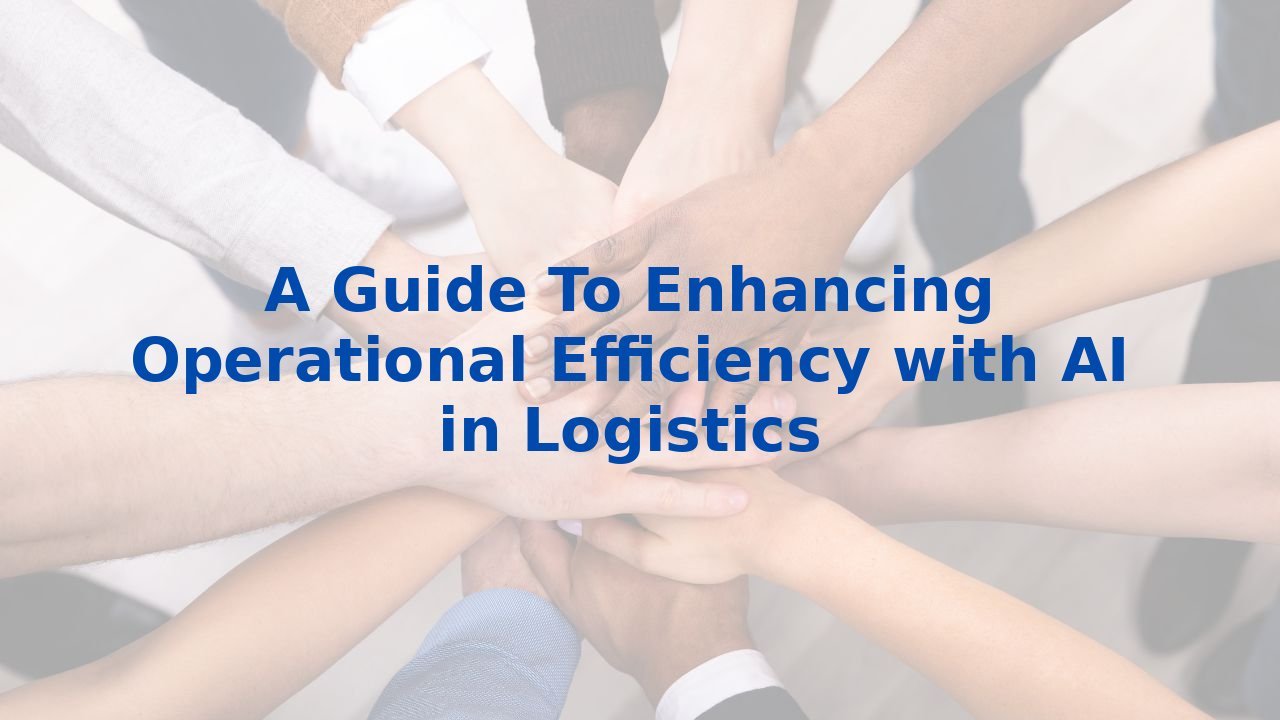A Guide To Enhancing Operational Efficiency with AI in Logistics
A Guide To Enhancing Operational Efficiency with AI in Logistics
In the relentless pace of today’s business landscape, operational efficiency isn’t just a strategy—it’s a necessity. The logistics industry grapples with unique challenges that demand innovative and agile solutions. At the forefront of these solutions is Artificial Intelligence (AI), emerging as a critical force for enhancing operational efficiency across diverse business processes. Here, we’ll dive into how AI can optimize logistics and beyond, revealing the staggering benefits of its integration within your organization.
1. Automating Routine Tasks
One of the standout benefits of AI lies in its ability to automate repetitive tasks that consume valuable time and resources. Within logistics, this translates to streamlining activities such as data entry, document processing, and inventory management. Imagine a system where AI-driven document processing swiftly analyzes and extracts data from incoming purchase orders. The outcome? Significant reductions in manual intervention and human error, allowing your team to focus on more strategic endeavors.
2. Improving Decision-Making
Data-driven decision-making can feel like an uphill battle, especially when faced with a sea of information. Enter AI, your trusted ally in enhancing decision-making by offering predictive insights through advanced modeling. In the logistics sector, AI analyzes historical data to forecast demand patterns, identify bottlenecks, and optimize delivery routes. This foresight empowers logistics managers to make informed decisions regarding inventory levels and shipment schedules, ultimately driving operational efficiency and customer satisfaction.
3. Enhancing Customer Service
Customer expectations continue to rise, demanding fast, reliable, and transparent service. AI can elevate your customer service game significantly. Picture deploying chatbots that handle inquiries around the clock, providing real-time updates on shipment statuses and resolving queries with minimal human intervention. Moreover, AI tools can sift through customer feedback, pinpointing areas for improvement and ensuring that every interaction is a step toward greater satisfaction.
4. Optimizing Supply Chain Management
The complexities of supply chain management can lead to operational hiccups if not closely monitored. AI excels in sifting through real-time data to optimize this intricate process. By detecting anomalies in purchasing data, it can flag potential stockouts or overstock situations before they escalate. This proactive approach not only ensures smoother operations but also reduces the risk of costly delays, effectively creating a more resilient supply chain.
5. Process Mining and Optimization
AI does not stop at enhancing current processes; it actively works to unearth inefficiencies as well. Through process mining, organizations can gain invaluable insights by analyzing data across various systems. This is about mapping out processes and identifying bottlenecks or redundancies, allowing businesses to tackle inefficiencies head-on. Continuous real-time monitoring ensures that organizations can act promptly, fostering an environment where operations run seamlessly.
6. Continuous Improvement
AI thrives on iteration. This commitment to continuous improvement means that businesses can benefit from ongoing feedback and data-driven recommendations. Using AI-driven insights, your organization can stay agile, adapting processes alongside evolving business objectives and industry standards. By adopting this mentality of constant enhancement, you open the door to innovation and sustainable development.
The Benefits of Training Employees for AI
While the capabilities of AI are game-changing, the real magic happens when employees are empowered to use these tools effectively. Cultivating a workforce trained in AI opens up a plethora of benefits:
- Enhanced Skills: Equipping employees with AI knowledge enhances their operational capabilities—making them proficient in tasks like data analysis and process automation.
- Improved Collaboration: A well-informed team is more likely to collaborate effectively with AI systems, leading to better decisions and streamlined workflows.
- Adaptability: Adaptability is essential in today’s rapidly changing market. Training in AI ensures that employees can pivot quickly with new technologies.
- Reduced Errors: Through understanding AI functionalities, employees can mitigate the errors often associated with manual tasks—driving accuracy, particularly critical in logistics.
Conclusion
In the rapidly evolving world of logistics and business at large, AI stands as a transformative force, steering operational efficiency in new directions. From the automation of tedious tasks to enhanced decision-making, AI’s application is broad and impactful. Yet its true value is harnessed when organizations prioritize training their employees to work proficiently with these technologies. By embracing both AI integration and continuous workforce development, businesses can not only enhance efficiency but also secure their competitive edge in the global marketplace.



